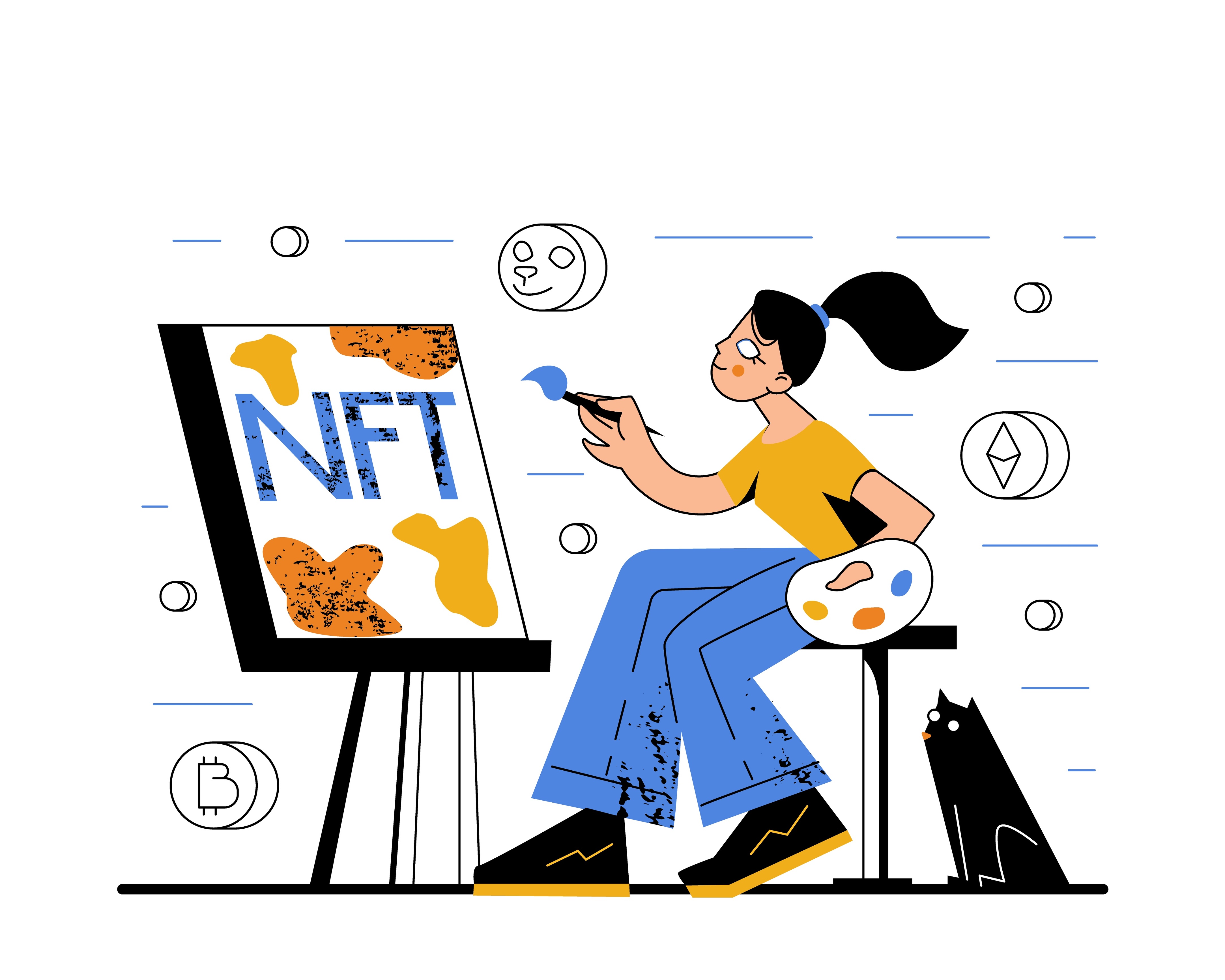
Authentically Engaging Consumers with NFTs: Four Tips for Brands
Filed Under: Data Trends, Brand Extension, Grow / Maintaining Strong Brands

Zoe Honeycutt
Analytical Support Specialist, C+R Alum
Although they’ve been floating around the internet since the mid-2010s, non-fungible tokens (NFTs) are beginning to go mainstream. In the past few months, NFTs have garnered increased media and consumer attention, in part thanks to online personality Logan Paul and musician Post Malone’s high-profile usage of the technology.
NFTs are original pieces of digital content—such as images, music and video clips, and even motivational quotes—that can be bought and sold using the cryptocurrency Ethereum. As with traditional art, the buyer owns the original digital item, and the record of sale is captured via blockchain technology, meaning the information is both public and tamper-resistant.
High net worth Millennials and digital native Gen Zers are the primary collectors of NFTs, and the fashion, art, and entertainment industries have been quick to adopt the technology. In March, Kings of Leon became the first musicians to release an album as an NFT, and the auction house Christie’s recently sold a jpeg created by the digital artist Beeple for over $69 million.
Perhaps fueled by consumer hype, brands such as Nike, Taco Bell, Pringles, and Charmin have already waded into the NFT waters. Some have written off these brands’ early attempts as publicity stunts; but if used authentically, we believe NFTs could become a powerful tool for brand engagement, especially with Gen Z—the first digital natives.
With this in mind, below are four tips to help your brand authentically leverage NFTs for consumer engagement.
Tip #1: Meet consumers where they converge online – and help them shine.
Consumers—especially younger Millennials and Gen Z—spend a lot of time online, and garnering this audience’s positive perceptions is vital. NFTs can help people clothe their digital selves, be it avatars in games or as a way to digitally spruce up selfies. Therefore, brands who help customers look on-trend in online spaces could profit.
An early example is Gucci, who recently released an augmented reality pair of tennis shoes that consumers, using a filter on their smartphones, can ‘wear’ in online photos. Selling at around $12, this NFT allows consumers to own Gucci at a fraction of what a pair of real-world Gucci shoes would cost.
Tip #2: Leverage NFTs as a high-tech version of loyalty programs, gift cards, and fan clubs.
Brand swag generally isn’t tech-forward. But a company called Rally is looking to change that. Rally is a social token platform that allows individuals and companies to mint, issue, sell, and trade branded cryptocurrency. These branded coins can be collected (akin to traditional swag like coffee mugs and t-shirts) or ‘spent’ by consumers for exclusive content, such as online events.
At the moment, the site seems limited to smaller creators, though Grammy winners Portugal the Man also make use of the platform. It’ll be interesting to see if this concept grows as NFTs take further hold. But if your brand is an early adopter looking for a fun new way to connect with consumers, it might be worth checking out.
Tip #3: Connect with influencers—especially artists—in novel ways that benefit all parties.
One major benefit of NFTs is that they allow digital creators to profit from the original saleand any subsequent sales of their creation. The amount the artist receives from each sale is embedded in the blockchain and is usually around 10% of the sale price. This is perhaps one reason why digital artists, authors, musicians, and filmmakers have so enthusiastically latched onto the trend.
While NFTs create the potential for ongoing revenue for your brand, you can also use this feature to generate positive PR by having the sales of branded NFTs profit the artist. Pringles recently released 50 “CryptoCrisp” NFTS – images of gilded Pringles cans with chips that look like cryptocurrency. The images sold for nearly $750 apiece, and all proceeds went directly to the artist.
Tip #4: Raise awareness and money for causes your brand cares about – while connecting with like-minded consumers.
Similar to benefiting an artist, you can use NFTs to benefit causes your brand cares about. Charmin’s recent foray into the NFT realm—cheekily called NFT(P)—raised money for Direct Relief, a health-related non-profit.
Social activism is important to many consumers, especially the Gen Z cohort – and they expect the brands they buy to share this conviction. Embracing NFTs as a vehicle to raise awareness and money for social causes could help build your brand’s credibility on two fronts: as an early adopter of technology trends and as a company committed to social responsibility.
Conclusion
The US and Europe have seen an uptick in the number of NFT startups, supporting the idea that NFTs are the future rather than a fad. Getting in ahead of the curve in a way that authentically resonates could give your brand a leg up when it comes to engaging with digitally-minded consumers, including Gen Z – and beyond.
Please also check out our other blog about NFTs, Is It Time to Write the Eulogy for NFTs?
explore featured
Case studies
